Qualcomm just announce its new Snapdragon W5 platform of SoCs for Smartwatches and other wearables. Contrary to what usually happens with its SoCs for high-end mobiles, this time Qualcomm has simultaneously launched the Snapdragon W5 Gen1 and the “Plus” version, Snapdragon W5+ Gen 1.
Both SoCs are based on the 4-nanometer manufacturing process with which they manage to reduce the consumption of the chip by half and double its performance when compared to the previous generation, the Snapdragon Wear 4100+. All this with double the functionalities and 30% less size.
The Snapdragon W5 integrate hybrid architecture, with a 4 Cortex A53 SoC and a low-power one with a Cortex M55
The Snapdragon W5+ Gen 1 will be based on a design of four ARM Cortex-A53 cores, and will include memory, GPU, ISP, network management, sound, etc. on the chip itself. It will be accompanied by a Qualcomm QCC5100, a support coprocessor based on the low-power Cortex-M55 architecture capable of managing the basic functions of the clock, including connectivity, audio and much of the main processor’s tasks, but with a much higher consumption. more limited for when the watch is not in direct use.
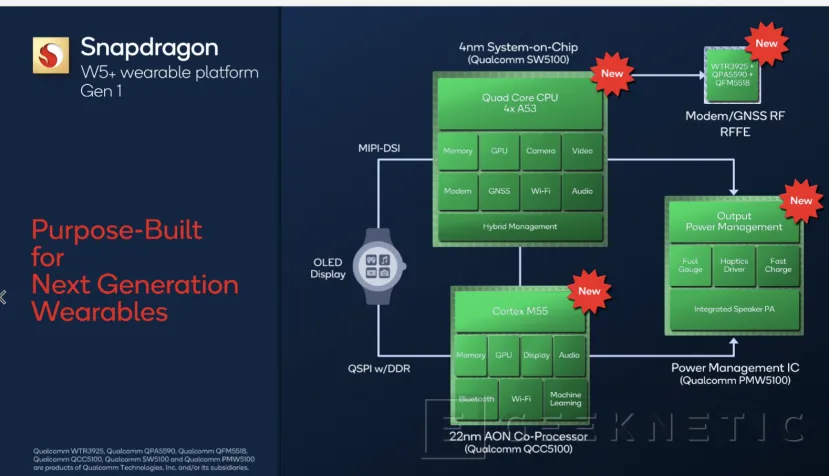
This coprocessor is manufactured at 22 nanometers. Next to it, we will also find the Qualcomm PMW5100 in charge of the energy management of the platform, including charging, haptic drivers and loudspeaker.
The four Cortex A53 cores have an operating speed of 1.7 GHz and are accompanied by 2,133 MHz LPDDR4 memory. Its GPU, A702, runs at 1 GHz.
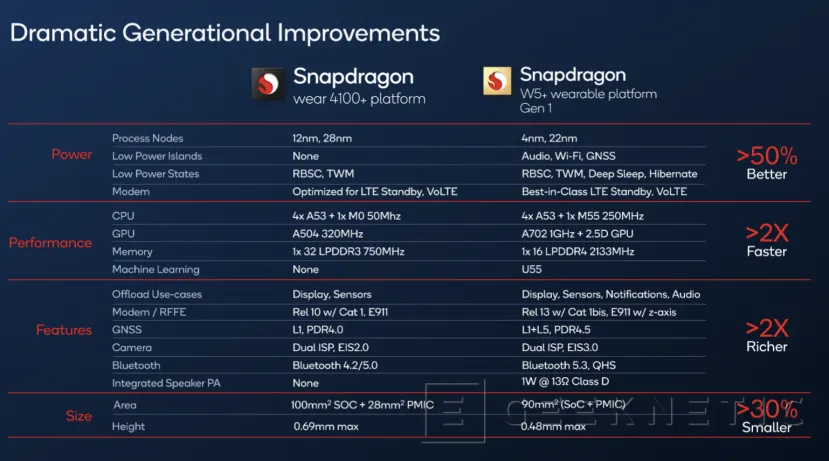
The idea of the AON coprocessor is to manage the clock for most of the time, since this type of wearable usually spends most of its time in standby mode. In this way, the main processor with its four Cortex-A54 will be in charge of managing the functions of Wear OS (Google and Samsung’s operating system) during direct use, while the Co-Processor will be in charge of the FreeRTOS system that will work in background managing the basic functions of the device in “Always On” mode, or “always on”. In this way, a hybrid architecture is achieved that will increase the autonomy of smartwatches, one of the critical points of these devices.


Between both architectures the load of the clock is distributed depending on the use that is needed. The tasks with the highest consumption and processing needs are assigned to the main 4-core chip, and others such as biometric sensors, Always On screen or music playback are assigned to the low-power chip.
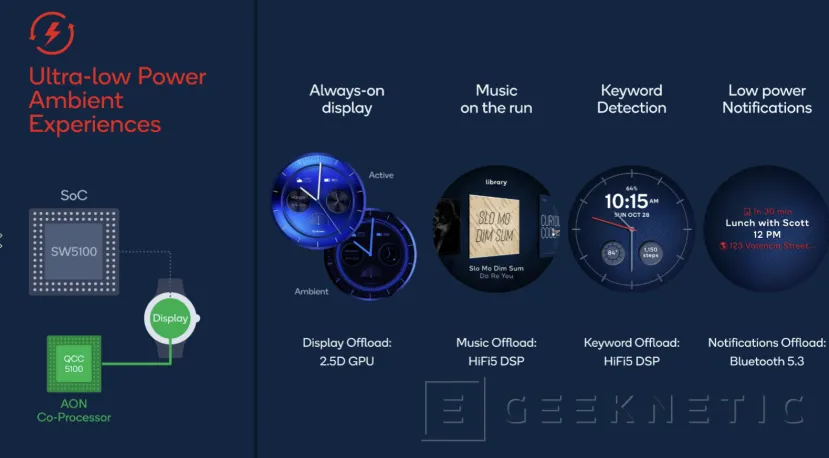
Furthermore, this type of architecture can be compartmentalized and use only parts depending on the state of the device. For example, keeping everything off but with bluetooth 5.3 communication activated.
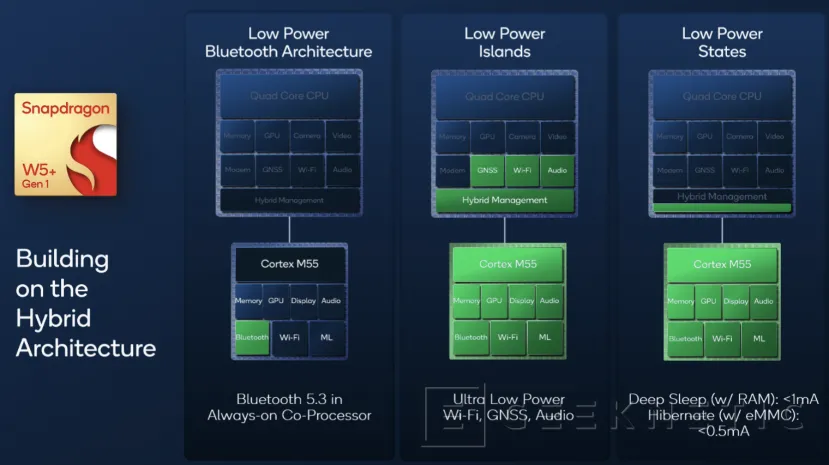
With these improvements, consumption is reduced by up to 60% compared to the Snapdragon Wear 4100+ of the last generation.

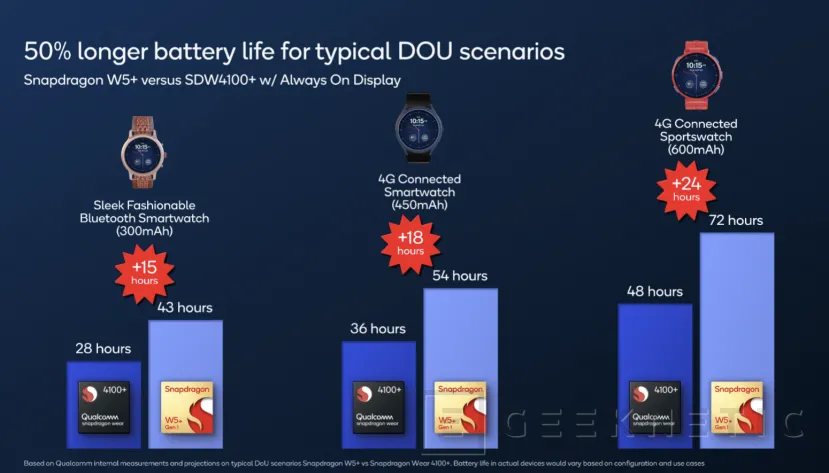
The new Snapdragon W5s will also enable slimmer clock designs as they are considerably reduced in size, from the silicon board to the SoC, and even the chipset drops 35% in size.
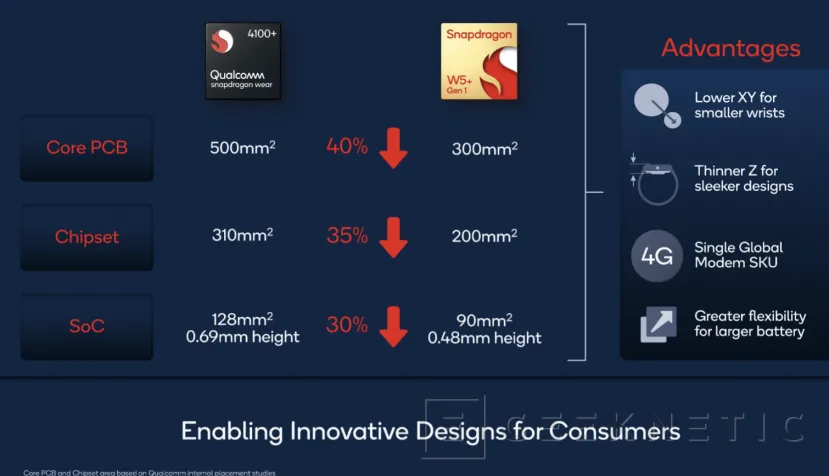
One of the first devices to make use of this Snapdragon W5 platform will be the Oppo Watch 4, which will hit the market this coming August. It will be followed by models such as Mobvoy’s TicWatch, which will integrate the Snapdragon W5+ Gen 1 on your new release.
In addition, Qualcomm itself has announced two reference designs created by Pegatron and Compal that will serve as a basis for other manufacturers to learn about the functions and characteristics of these new chips.
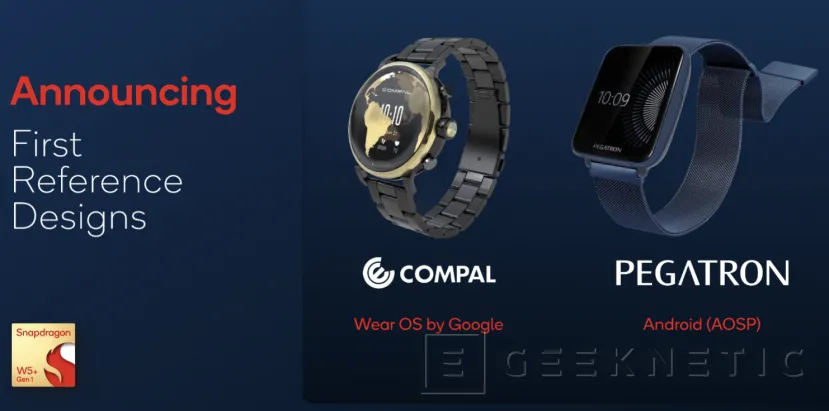
End of Article. Tell us something in the Comments!




![[Img #74664]](https://thelatestnews.world/wp-content/uploads/2024/12/James-Watson-The-controversial-genius-behind-the-double-helix-150x150.jpg)





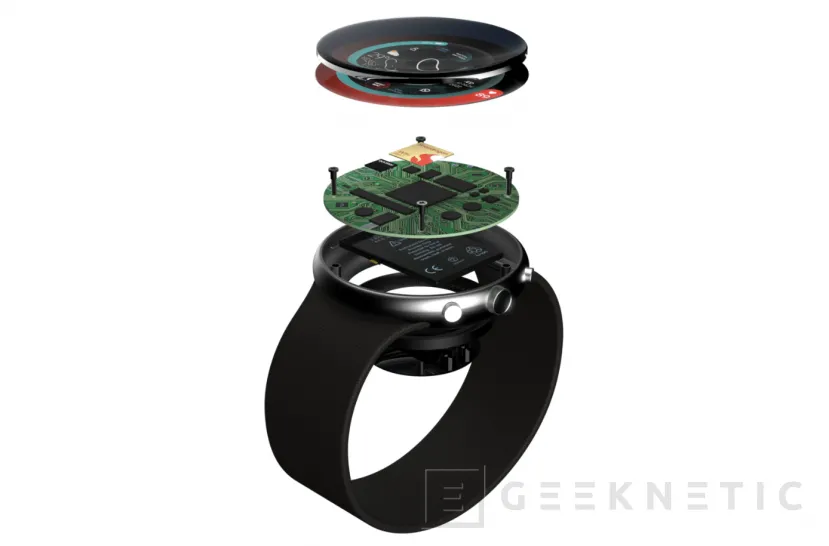

Add Comment